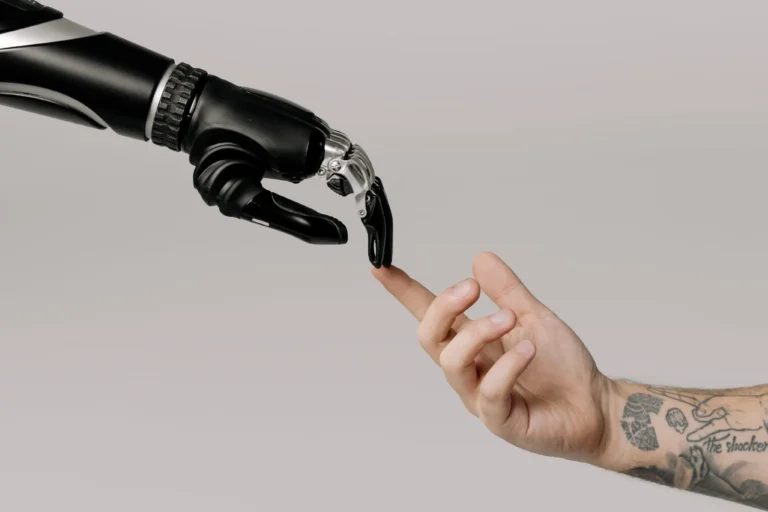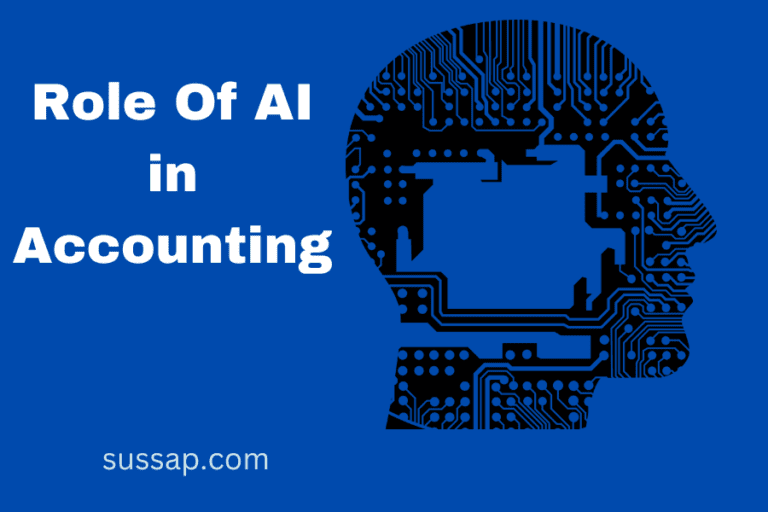In the year 2024, artificial intelligence (AI) is transforming nearly every aspect of our daily lives. From helping us be more productive at work to keeping us safe on the roads, AI-powered innovations are making life easier in some truly mind-blowing ways.
In this article, I’ll highlight 33 examples of how AI is improving life TODAY.

Intelligent Virtual Assistants
Intelligent virtual assistants like Siri, Alexa, and Google Assistant understand natural language, answer complex questions, control smart home devices, make personalized recommendations, and so much more. They help us get things done faster. For example, up to 40% of US adults now use virtual assistants daily leveraging convenient voice commands for tasks like playing music, online shopping, controlling appliances and even planning their commute.
Self-Driving Cars
Fully autonomous vehicles powered by artificial intelligence are hitting the roads. They promise to drastically reduce the 1.3 million annual auto fatalities as well as enable safer, more relaxing commutes. For instance, Waymo’s driverless taxi fleet has already completed over 20 million miles of public road testing while Cruise received approval to drive their autonomous cars on the streets of San Francisco unattended. No more road rage!
Predictive Policing
Police departments utilize AI to analyze crime data including type, location, date, and time to determine optimal areas for proactive patrolling. This prevents crimes before they occur and makes cities safer. Predpol software has helped reduce burglaries in some neighborhoods by as much as 33%.
Cybersecurity
AI algorithms now detect network intrusions and suspicious insider activities in real-time. This allows security teams to rapidly defend against hackers, defeat malware, and protect sensitive personal data from theft. For example, DarkTrace’s cyber AI stopped a ransomware attack at a European electronics manufacturer saving them over $2 million in damages.
Traffic Optimization
Intelligent traffic management systems like those from Cellint now analyze real-time traffic patterns using AI. They then automatically adjust traffic light timing to reduce congestion across entire cities. This makes commutes shorter for millions of drivers. Cellint is already deployed in 400 cities including Las Vegas where they reduced travel times by over 25%.
Personalized Education
AI tutoring systems adapt lessons to each student’s unique strengths and weaknesses based on performance. This helps students learn subjects ranging from math to computer programming over 3x faster while keeping them more engaged according to studies. For example, Carnegie Learning’s MATHia software now provides personalized math instruction to over 2 million students.
Medical Diagnosis
AI can now diagnose diseases from pneumonia to cancer as accurately as expert physicians by analyzing medical scans, test results, and health records. This helps doctors pinpoint issues faster preventing delayed treatments. In one study, AI diagnosed brain tumors with 99% accuracy vs 96% for humans and lung cancer with 97% vs 83%. As a result, more lives are being saved.
Financial Planning
AI “robo advisors” like WealthFront and Betterment analyze finances, investments, taxes, retirement planning, and more. They provide personalized, optimized recommendations saving users up to $350k over 30 years per a Vanguard study. This keeps budgets balanced and gets users to financial goals faster.
Fraud Detection
Banks now utilize AI to monitor transactions, accounts, and networks in real-time. Rule-based systems and deep learning algorithms identify patterns revealing fraudulent activities faster than ever before. This saves financial institutions over $1 billion annually and protects customers from losses.
Optimized Flight Paths
Major airlines including KLM, Air France, and JetBlue now use AI to analyze weather forecasts, radar data, fuel usage, and more to determine the fastest, smoothest flight paths possible. This saves substantial fuel costs while getting passengers to their destinations quicker through optimized routing.
Recommendation Systems
OTT streaming services like Netflix and Amazon Prime Video use artificial intelligence algorithms to understand individual user preferences based on browsing and viewing habits. They then recommend specific movies and shows each user is likely to enjoy. This keeps subscribers watching longer while helping them discover new content among thousands of options.
Weather Forecasting
The National Oceanic and Atmospheric Administration (NOAA) now uses AI to interpret data from satellites, surface stations, buoys, radar, and aircraft creating better medium to long-range weather forecasts. For example, hurricane path predictions are now accurate within 100 miles vs 300 miles previously. This gives communities more time to prepare for saving lives.
Wildlife Conservation
Environmental groups use real-time data from AI camera traps to detect illegal poaching and logging activity alerting rangers within minutes to apprehend perpetrators thereby protecting endangered animals. Since deployment across elephant habitats, poaching rates have decreased by as much as 80%.
Smart Factories
AI algorithms coordinate entire production pipelines – predicting failures, adapting to fluctuations, eliminating inefficiencies, and optimizing energy consumption across facilities. This increases output, productivity, quality, and compliance according to McKinsey. For example, AI systems have reduced scrap rates by over 10% at some steel mills saving tens of millions annually.
Precision Agriculture
AI-enabled drones and software give farmers ultra-precise insights into crop health down to the individual plant. This enables extremely targeted, optimized application of water, fertilizers, and pesticides. As a result, crop yields have improved by over 25% on some farms while resource usage has declined by 20%.
Call Center Operations
Sophisticated AI chatbots now understand context, and intent and mimic human call center response patterns with high accuracy. This dramatically speeds up customer service and issue resolution through natural language conversations. For example, TMobile’s virtual assistant now handles over 15 million customer interactions per month.
Optimal Travel Routes
AI powers Google Maps, Waze, and other navigation apps by processing real-time traffic data to determine the absolute quickest routes. For instance, by factoring in a traffic jam that just occurred, AI reroutes users saving them time and fuel while avoiding frustration. This gets millions of drivers and riders to destinations faster daily.
Email Organization
Email apps like Cleanfox, Sortd, and Edison Leverage natural language processing to understand message content automatically sorting each email into custom folders without human supervision. This keeps inboxes perpetually clean, focused, and organized for hundreds of millions of busy professionals worldwide.
Predictive Text
Your smartphone keyboard leverages AI to suggest complete words and phrases as you type – reducing typos and speeding up communication. For example, Gboard can now enter credentials like addresses automatically saving users over 100 taps per day.
Personalized Marketing
Advertising platforms implement AI to analyze your browsing history and purchasing habits creating customized digital ads tailored to items you’ve previously shown interest in. This makes ads across websites, apps, and social media more relevant improving engagement up to 200% in some cases.
Image/Video Generation
AI algorithms can now generate highly realistic original digital artwork, images, or videos based on detailed text descriptions alone. For instance, systems like DALL-E 2 can imagine and render anything from a “bear sleeping under the tree” to an “astronaut riding a horse” in seconds allowing anyone to explore their creativity.
However, there is a misuse of AI technology in creating manipulated deep-nude images and videos.
Language Translation
Apps like Google Translate, Microsoft Translator, and Bryan now leverage neural networks to interpret speech or text in over 100 languages in real-time. This allows fluid communication globally –breaking down language barriers between cultures during travel, immigration, and business.
Algorithm Design
AI can now write its software algorithms by analyzing codebases to determine patterns and best practices. The resultant programs then improve exponentially through recursive self-writing and optimization. For example, DeepMind’s AlphaCode AI can generate algorithms that rival human coders in competitions.
Audio Editing
Multiple startups now offer AI-powered audio editing apps that identify ambient sounds like wind, echoes, or background music allowing precise, context-based isolation or removal. This provides cleaner vocal tracks for podcasts, videos, and more in just minutes without expertise.
Data Analysis
AI excels at parsing huge datasets – drawing conclusions, revealing insights, and making predictions far faster than humans could manually. For instance, AI is accelerating scientific progress by discovering patterns human researchers would take decades to uncover if at all. This is fueling innovation across medicine, quantum physics, genetics, and more.
Augmented Writing
AI writing assistants like Rytr, Shortly, and INK now help human authors craft better blog posts, essays, creative fiction, and other written content exponentially faster. They eliminate writer’s block while enhancing idea generation, vocabulary use, outlining guidance, and error identification through interactive feedback.
Inventory Management
Major retailers like Amazon and Walmart now use AI to predictively track inventory levels across nodes in their fulfillment network. Algorithms model billions of data points including past sales, seasonality, promotions, and even weather to optimize reordering and logistics. This reduces overstock waste by up to 65% while minimizing stockouts.
Food Production
AI and computer vision guide autonomous robots to plant seeds, harvest crops, monitor plant health, and determine optimal growth conditions for greenhouse-based produce. This maximizes yields up to 30% using 95% less water per square foot according to Iron-Ox. More bountiful gardens feed more people using fewer planetary resources.
Wildfire Prediction
The Forest Service leverages AI to analyze weather conditions, vegetation levels, and patterns from past burns. It then predicts a fire’s probability, speed, and direction of spread with 90% accuracy 96 hours out. This gives residents in fire-prone areas ample time to evacuate while deploying resources proactively saves properties.
Talent Recruitment
Instead of relying on resumes alone, employers now use AI to assess candidate skills, experience, personality traits, and cultural fit for open positions matching people to optimal roles. For instance, Humantic’s video interview analysis improved new hire retention for some companies by over 15%.
Preventative Maintenance
AI now powers predictive maintenance at industrial facilities. By processing sensor data with ML algorithms, AI identifies mechanical issues early enabling proactive repairs before catastrophic failures cause costly unplanned downtime. This has prevented billions in economic losses across oil rigs, wind farms, aerospace manufacturers, and more over the past several years.
Personal Health Management
From smart watches to mobile apps, AI now provides personalized insights and suggestions to improve individual wellness based on biometric data. For example, Mindstrong Health detects mental health issues before they become crises while offline interventions reduce suicidal tendencies by 71%. As a result, people are living longer, healthier lives.
Related:
The Future is Here
As the 33 examples above demonstrate clearly, artificial intelligence is already providing tremendous value across nearly every facet of life TODAY in the year 2024. Driven by progress in machine learning, neural networks, and computing hardware, AI solutions are becoming incredible assets for humanity. And capabilities are still advancing exponentially. While the future is unknown, one thing is certain – with AI’s rapid improvements, the next decade promises to be life-changing!




